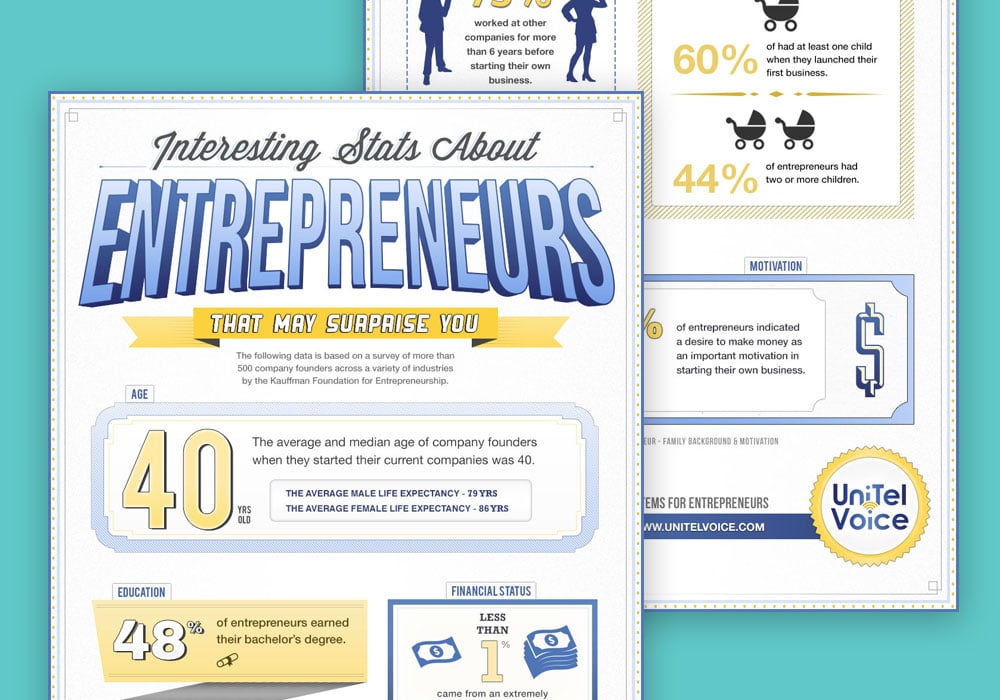As an entrepreneur, you’ve probably heard people tell you that “it’s what you know that’s profitable,” and they are absolutely right.
There are plenty of ways to make money online, each one with its own learning curve, barriers to entry, and profit margins. Getting involved with creating and selling digital products is a great way to take steps towards securing your own financial security – and make money while you sleep.
What are digital products?
Digital products are goods created by subject matter experts that exist in a digital format. Digital products can instantly download digital from the Internet, making them easier than physical products to create, manage, and distribute at scale. Once you create a digital product it can be sold repeatedly to generate recurring revenue.
Here’s a list of the different types of digital products you could create and sell:
- Apps & plugins
- Audio & music
- Calculators
- Email courses
- Fonts
- Graphics & digital art
- Membership access to groups
- Online courses
- Online events
- Photography
- Podcasts
- Printables
- Quizzes & surveys
- Recipes
- Research & Data
- Swipe Files
- Templates
- Webinars
What’s the best way to create, market, and sell digital products?
Despite the myriad of online selling platforms available on the internet, however, it’s worth pointing out that not all are created equal.
Some are built as add-ons to other websites and some are all-in-one platforms that give you all the tools to create your own eCommerce website.
Which one you choose will depend on your needs. Even so, there are a few features that your online selling platform must have if you want to be successful in the marketing digital products.
Below, we’re going to briefly touch on 5 must-have features you should look for in an online selling platform for digital products.
1. The Ability To Customize
What separates you from your competitors? If you’re using a cookie-cutter website theme, then that answer to that question would pretty much be a big fat “n-o-t-h-i-n-g.” Or, at least, you make it look that way to your audience since your website looks like how every other site looks in your niche.
When you have a highly customizable website, however, you can enhance your brand image greatly by creating a stunning-looking website — something that your other competitors might not be doing. The good news is, there are online selling platforms that are very easy to use when it comes to customizing your websites.
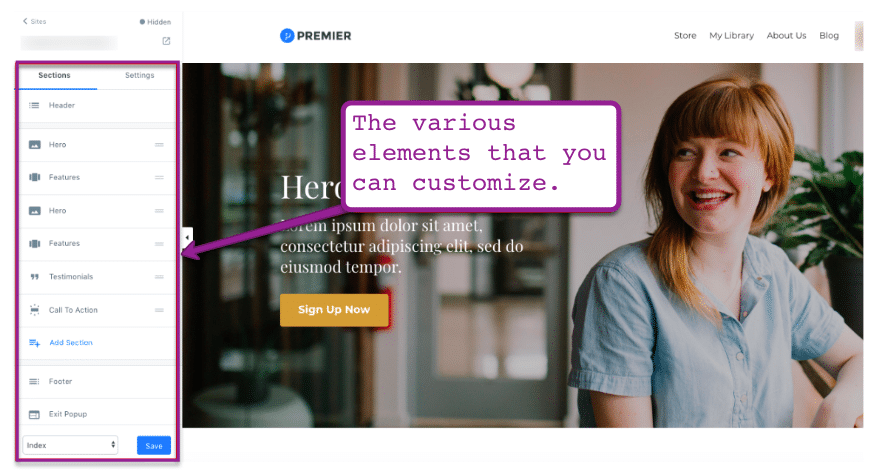
Kajabi’s website builder has truckloads of features and functionalities, yet, it’s very easy to use.
As you click any of the elements on Kajabi’s website editor, you’d be able to see how you can customize them.
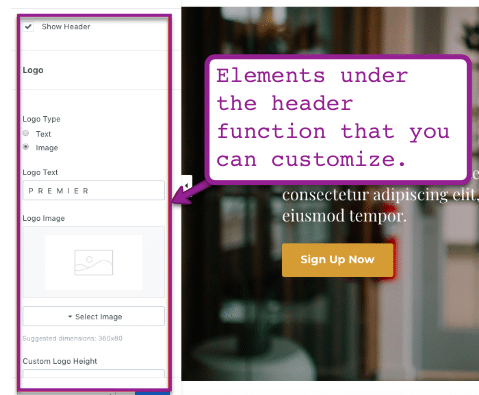
With that much leeway to tweak design elements and content areas on your site, you’ll look more professional and authoritative, and you’ll likely close more sales. Remember, if you want to be viewed as a reputable online seller, you need to look the part.
If your online selling platform doesn’t allow you to do much website customization, you’re bound to compromise your brand image and conversion rates big time.
2. Mobile-Friendly Design
The websites your online selling platforms produce should be mobile-friendly — this bit is non-negotiable.
How important is a mobile-friendly website?
According to the data from socPub, 57% of users wouldn’t recommend a business with a poorly designed mobile website. Of course, if your website isn’t mobile-friendly, it’ll look all weird and messy on your audiences’ mobile devices. The data pretty much solidifies how crucial it is for your website to be mobile-friendly.
If your website isn’t mobile-friendly, then you could be losing bajillions of would-be sign-ups to your online courses. And so the question becomes, how do you make sure that your website is mobile-friendly? Google has a tool for that.
Just enter the website’s URL in Google’s Mobile-Friendly Tester tool, and you’ll see Google’s take on your website. In the screenshot below, I added HuffingtonPost as an example.
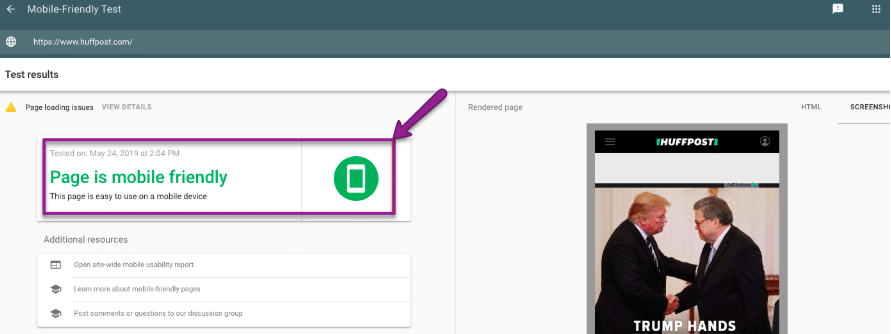
As you can see, the tool gives you a clear answer if your website is mobile-friendly.
Quick tip: Be sure to click the “Page Loading Issues” warning if you see it. It’ll give you some insights of what’s hurting your site’s load speed.
3. Easy Checkout
Next, you need to find an online selling platform that has a simple easy-to-use checkout design, both for desktop and mobile interfaces. From the moment that your customer clicks on your product, your goal should be to convert them from a viewer to a purchaser. That means it has to be easy for your customers to select your digital product and purchase.
Overcomplicated checkout process will kill your conversions:
- If they have to keep on looking just to find the “buy now” button, they might leave.
- If they can’t find the pricing options, they may get frustrated and leave.
- If the payment processor doesn’t accept their payment method, they may leave.
As you can see, all it takes is a “little” hiccup for your visitors to leave, even if they wanted to buy.
This means you need to walk through the purchasing process and see if everything is clean and simple. If it isn’t, you need to do what you can to simplify the process. If you can’t make the necessary changes, you may need to find another online selling platform.
4. Integrated Payment Processor
Most online payment processors handle customer transactions for you, so you can accept payments from multiple credit card providers like Visa, Mastercard, American Express, PayPal, and more.
Even so, some have restrictions based on a number of factors. Some companies refuse to work with American Express, for example. If the bulk of your prospective customer base uses American Express, this could be crippling to your success.
Which is why you should understand your customer demographics. Where are most of your prospective customers coming from (country, region, interests)? What age group is most likely to purchase your products and/or services? Do they have a preferred payment option (credit, PayPal)?
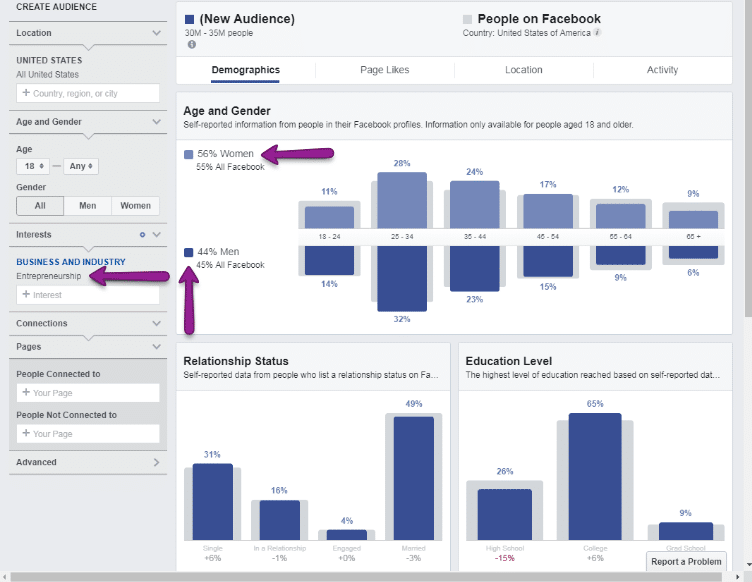
If you need help researching your prospective customer demographics, you could use the Audience Research tool provided by Facebook Audience Insights. The amount of data that Facebook has on people is alarming, but it can really help you narrow down all of the above, and so much more.
5. Built-In Blog
And finally, we’ve all heard the saying that “content is king.” Well, it’s true, but what type of content are we talking about?
Content is much more than just text. In fact, content can be audio files, instructional videos, online learning courses, and so much more. But, a website without a blog isn’t going to draw much attention. There are only so many static pages you can create before you start to look spammy.
With a built-in blog, you can add new content that is relevant to your visitors and to your market. In doing so, you give the search engines a reason to keep visiting your website, indexing the new content, and sending new visitors that match up with you.
If the online selling platform you’re looking at does not offer a built-in blog, you need to consider other alternatives. Given how crucial content has become in this ever-changing online landscape, it’d be a crucial mistake to house your business on a selling platform that doesn’t allow you to publish blog posts out the box.
Conclusion
As you can see, each feature mentioned above is primarily focused on the user experience. Which makes sense, being that you need customers to buy your products and/or courses.
Selling digital products isn’t easy. You not only need high-quality content, but you also need to build a brand. This means having a professional website and the tools to market it. Did you know 38% of people will stop using a website if the layout isn’t attractive or the user experience isn’t engaging? A poor website will kill your chances of success.
Instead of risking a bad user experience, focus on finding an online selling platform that can handle all of your needs, while giving your users what they are looking for. Saving a few dollars upfront could be costing you thousands in profits later. Focus on your users, and they’ll reward you with sales.
Editor’s Note: This article is part of the blog series Start Your Business brought to you by the marketing team at UniTel Voice, the virtual phone system priced and designed for startups and small business owners.






